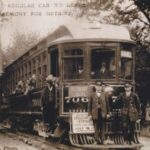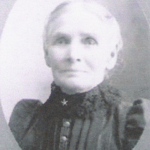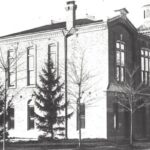The reason for the bond issue was not initially the student count. The school’s library had been returned to its original location in the center of the 1927 building on the second floor. The center section of the second floor hallway was part of the library. To lock up the library, double doors sealed the hallway from the library. As a result, people in classrooms on either end of the building only had two ways to escape in case of a fire. Their escape would be down the stairway or jumping out a second floor window.
In the 1984-85 school year a teacher complained to the administration about the locking of the library doors. Not receiving a satisfactory answer from the administering, he issued a formal complaint with the State Fire Marshall.
In the Fire Marshall’s written report, issued in the spring of 1985, he issued a citation for the locking of the doors before everyone had left the floor. However, when a Fire Marshall inspects a building as the follow-up to a formal complaint, he is required by law to note and issue citations on any other violations he sees. His formal report included about a dozen additional items that needed to be addressed.
The school had received approval from the public for a “Building and Site” millage that could only be used to make repairs to the building. Thou this millage was intended to address other issues, it was used to correct the items in the Fire Marshall’s report. The total bill was about $40,000.
Once the Fire Marshall is notified of the completion of the items in his report, he has to inspect the repairs and give his approval. However, that requires him to again walk through the building and unfortunately he found additional items that needed to be corrected. In the fall, the Board was presented with the Fire Marshall’s approval of the initial complaint and his next list of needed repairs was given to the Board. The Board requested a sit down with the Fire Marshall to avoid repeated correction lists.
At a later Board meeting with, the Fire Marshall, it became apparent that the only way to avoid doing the repairs piece-meal was to do a large-scale renovation of the facility, which would require a bond issue to cover the costs.
A building inspector went through the 1927, 1952, 1955, and 1967 portions of the building and noted a number of problem areas. None of these problems were insurmountable or unaffordable in a large scale project but the list was long.
When the inspector and Fire Marshall went into the “White House”, the Fire Marshall exclaimed, “Oh, my God!!” He was looking at wood paneled walls throughout the classrooms and hallway and there was no drywall behind the paneling. If the building did not have doorways leading directly out-of-doors, he would have immediately condemned the building.
The building inspectors report on the “White House” was written to allow the district to continue to use the building through the end of the school year. Privately, he told Mr. Briggs (superintendent) that if there was a heavy snow or rain or high winds, he would recommend getting the students out of the building.
The Fire Marshall’s report was also written to allow the completion of the school year without major disruptions. However, the overall result was to condemn 21 out of the district 41 classrooms. The net result was an absolute necessity to build a new building and make major investments into repairs and renovations of the existing structures. We put together a bond proposal for the new high school that was constructed on Howland Road and performed over a million dollars of repairs and renovations to the existing facilities. The design for the High School took into consideration the projected student population. However, the State of Michigan only allows schools to build schools using a five-year student count projections, which means that by the time the building is built, the building may be fully occupied within three years and the district will need to build again. To make this even worse, new buildings tend to attract families with children, thus filling the school even sooner. The construction of the primary school and the middle school within ten years of opening the high school is a perfect example of this effect.




